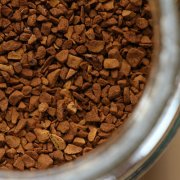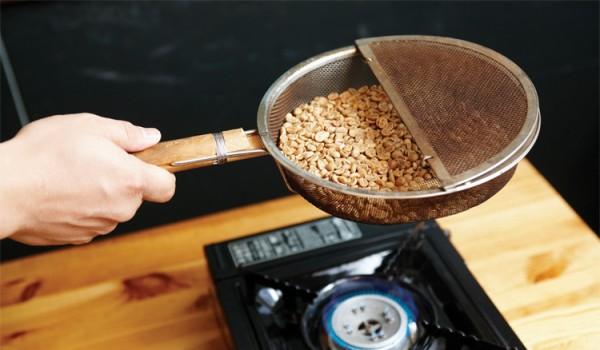[introduction of producing areas] Coffee producing areas in Africa-Kenya and Malawi
Kenya
Kenya
Population: 44,354,000
2013 production (60 kg / bag): 850,000 bags
Coffee taste:
Kenyan coffee is famous for its distinctive and complex berry and fruit flavors, with sweet flavors and dense acidity.
Central Kenya produces the most coffee and is of the best quality. Of course, coffee from western Kenya, such as Kisii, Trans-Nzoia, Keiyo and Marakewt, is also getting attention.
Even though neighboring Ethiopia is seen as the birthplace of coffee, Kenya's coffee industry is growing slowly. The earliest literature on the import of coffee was recorded in 1893 when French missionaries brought coffee trees from Reunion Wanda, and coffee beans were first harvested in 1896. Kenya has been able to produce a variety of different kinds of high-quality coffee. Considerable progress has been made in coffee research and development, and many farmers have highly professional production knowledge. And the Kenyan bidding for coffee helps to get higher prices for producers who value quality.
Kenyan coffee is grown by large estates or small farmers, whose coffee is harvested and sent to the local wet treatment plant for processing. This means that it is easy to get a single manor with high traceability, but in recent years more and more high-quality coffee comes from small farmers. Usually these coffee beans from specific wet treatment plants are marked with particle size grades, but the same batch of coffee beans may come from hundreds of small farmers. Such wet treatment plants (or factories) play an important role in the quality of finished coffee beans, so these coffees are also worth looking for.
Kenyan coffee varieties
There are two varieties in Kenya that particularly attract the attention of boutique coffee owners: SL-28 and SL-34. This is the second of 40 varieties from a research project led by Guy Gibson of Scott Labs. They account for the vast majority of Kenya's high-quality coffee production, but these varieties are susceptible to leaf rust.
Kenya is sparing no effort in developing varieties that are resistant to leaf rust. Ruiru11 is the first successful variety recognized by the Kenyan Coffee Council, and people are looking forward to the future cup test of Batian varieties.
Malawi
Malawi
Population: 16363,000
2013 production (60 kg / bag): 30000 bags
Coffee taste:
Most Malawian coffee tastes sweet and pure, but it doesn't have the explosive fruity and complexity of coffee from other East African regions.
Coffee produced in Malawi is rarely distinguished by origin, and coffee-producing areas can be regarded as areas where coffee is grown, rather than by local soil or microclimate.
Coffee was introduced to Malawi in the late 19th century, and although Malawian coffee production initially excelled, it soon failed because of poor soil, pest management and control, as well as the rise of Brazilian coffee. Malawi has lost its competitiveness.
Coffee varieties in Malawi are polarized. There are many high-profile varieties of Rosa in Central America. In addition, disease-resistant katimos are found everywhere, but the quality is usually poor.

Important Notice :
前街咖啡 FrontStreet Coffee has moved to new addredd:
FrontStreet Coffee Address: 315,Donghua East Road,GuangZhou
Tel:020 38364473
- Prev

Say goodbye to mediocrity| 3 New Ways to Eat Instant Coffee
Professional barista communication, please pay attention to coffee workshop (Weixin Official Accounts cafe_style ) Modern people drink coffee all day long. The most convenient way is to buy instant coffee and make your own cup. See netizens on the network day and night will make a big effort to personally test the new food method of each thing. This time it's time for instant coffee. Instant coffee is usually heated water and stirred twice before drinking, but
- Next

[mobile network baking] you can also bake professional coffee beans at home.
Communication of professional baristas Please pay attention to the coffee workshop (Wechat official account cafe_style). Even without a professional bean roaster, it can be easily roasted at home. Although the quality of beans baked by commercial bean bakers is not as uniform and the taste is difficult to adjust, the advantage is that you can observe the baking process and taste the finished products baked by yourself. And if you hold your hand.
Related
- Beginners will see the "Coffee pull flower" guide!
- What is the difference between ice blog purified milk and ordinary milk coffee?
- Why is the Philippines the largest producer of crops in Liberia?
- For coffee extraction, should the fine powder be retained?
- How does extracted espresso fill pressed powder? How much strength does it take to press the powder?
- How to make jasmine cold extract coffee? Is the jasmine + latte good?
- Will this little toy really make the coffee taste better? How does Lily Drip affect coffee extraction?
- Will the action of slapping the filter cup also affect coffee extraction?
- What's the difference between powder-to-water ratio and powder-to-liquid ratio?
- What is the Ethiopian local species? What does it have to do with Heirloom native species?

